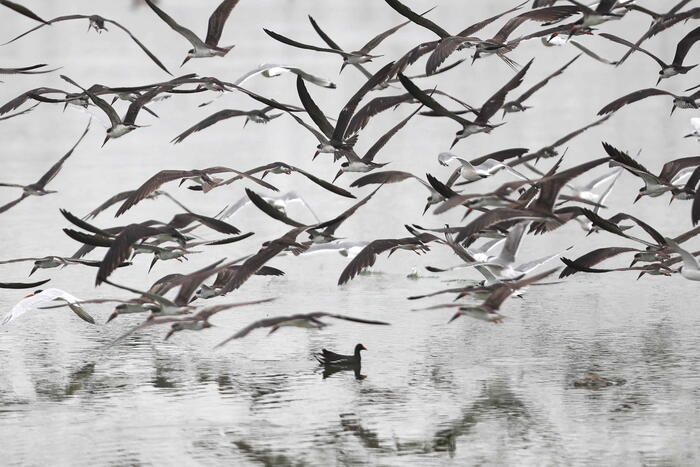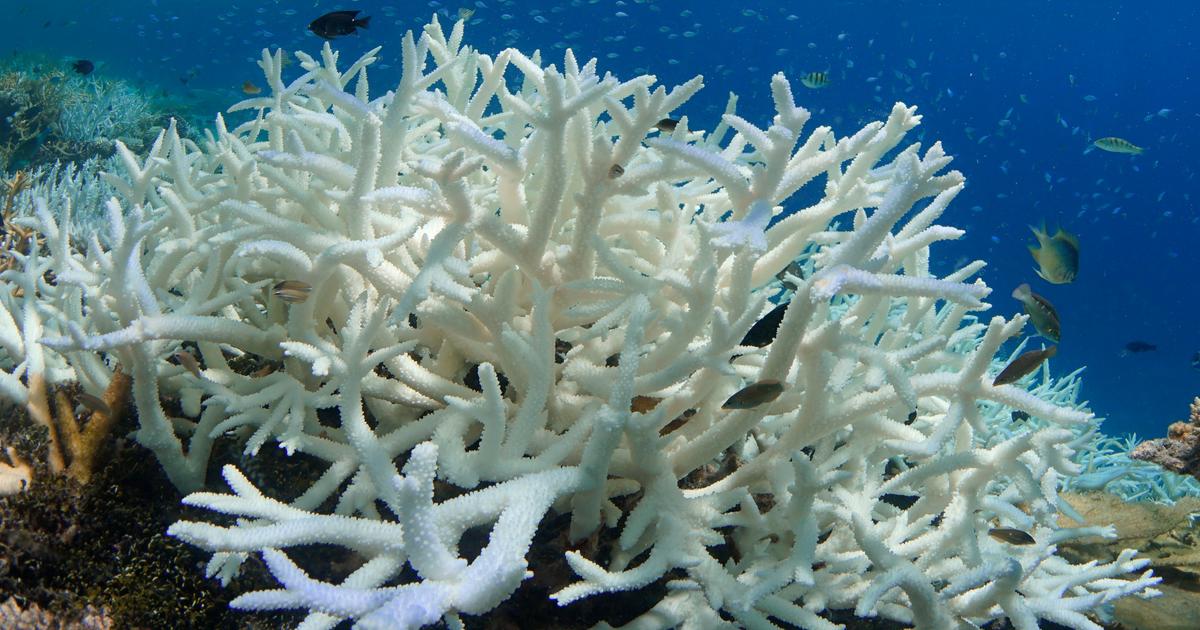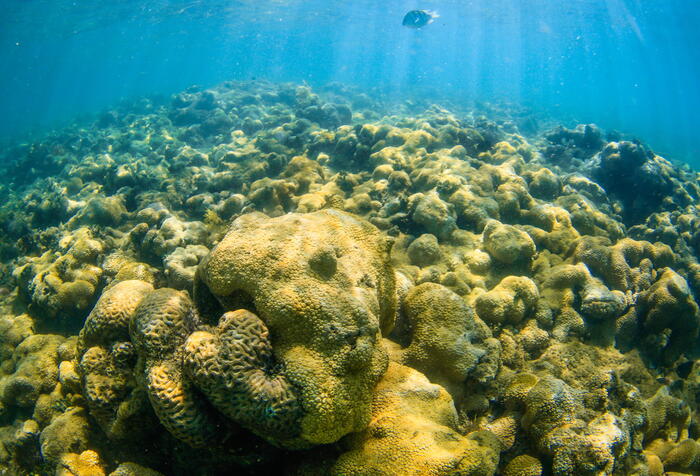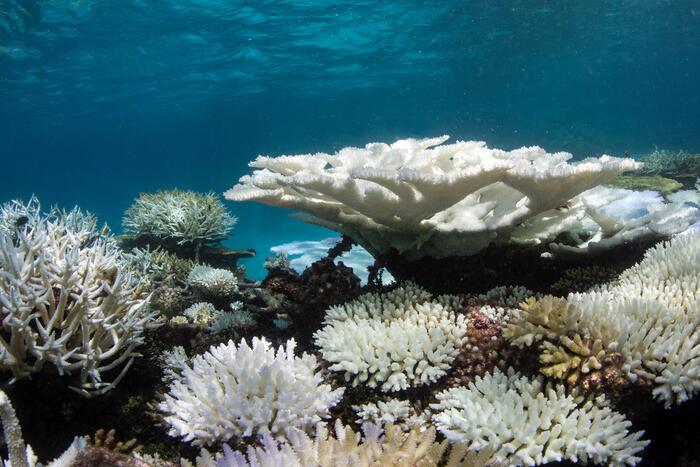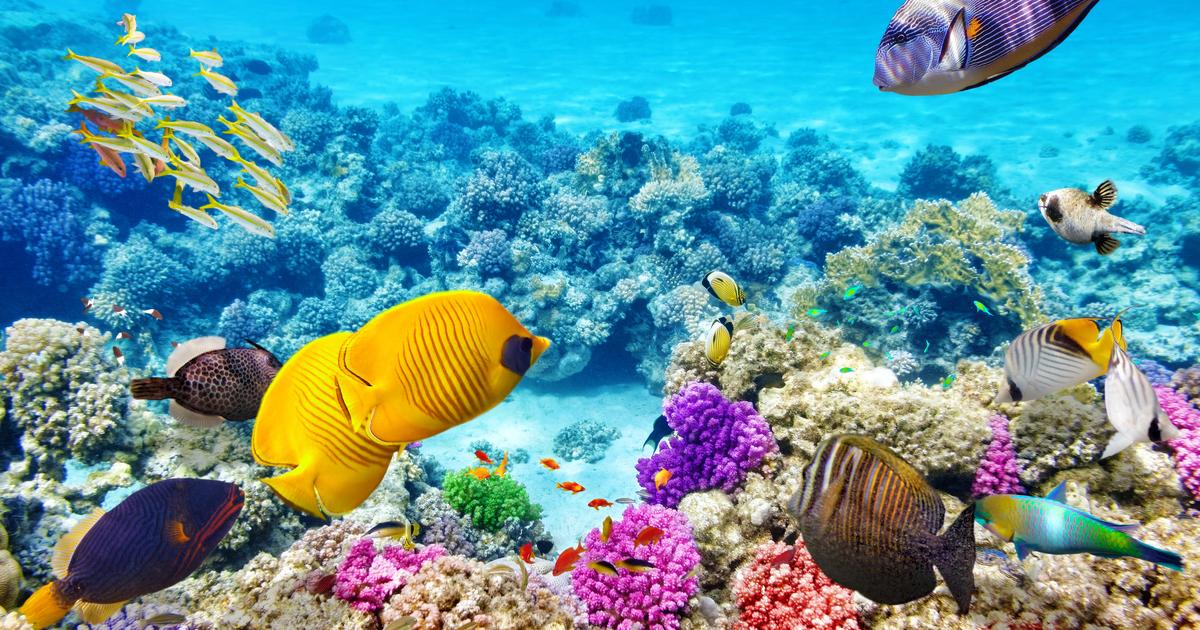Enlarge image
Coral reef in French Polynesia
Photo: Joao Paulo Krajewski / dpa
Coral reefs are something like the fairgrounds of the sea: colorful to garish, they are bursting with life and offer space for countless species.
In addition, the underwater locations also ensure the livelihood of the people in the area by enabling tourism and fishing.
A study now shows that coral reefs are not separate habitats, but are in exchange with each other around the world.
Because in many fish species the larvae drift along the ocean currents from the spawning areas to their nurseries - so that some coral reefs are more likely to be source areas for biodiversity, others transit zones and other recipient regions.
More than 70 percent of the reefs important for these networks are not protected, reports the international research team led by Luisa Fontoura from Macquarie University in Sydney in the journal Science.
Given the paramount role of coral reefs for biodiversity and often also for the local economy, the role of such zones must be given greater consideration when designating marine protected areas.
"Globally, 29 percent of the distribution corridors, 26 percent of the larval recipient areas and 24 percent of the source regions are currently in marine protected areas," the team states.
However, there are large regional variations.
Ironically, in the Indo-Pacific, which contains many particularly important and species-rich reefs and where a particularly large number of people depend on fishing, there are only a few protected areas.
The team writes that only five to 8.5 percent of the important functional areas are under protection, referring primarily to Southeast Asia.
Using modeling of ocean currents and characteristics of different fish groups, the researchers examined the role of 272 coral reefs in the equatorial regions around the world. Coral reefs in particular that receive a particularly large number of larvae therefore not only contain an extremely large number of species, but also develop roughly twice as much biomass as the regions of origin. Therefore, they are also particularly resistant to human intervention, provided that fishing is sustainable. In contrast, regions of origin of larvae react more sensitively and should therefore be specially protected.
"In coral reefs, different groups of fish contribute to ecosystem functions in different ways," Fontoura is quoted as saying in a statement from her university.
"While large carnivorous fish with relatively short spawning seasons make a significant contribution to local fisheries, small reef fish, which reproduce more regularly throughout the year, are responsible for much of the amazing fish diversity we see on coral reefs today."
In recent years, researchers have pointed out the poor condition of many coral reefs around the world.
The main causes are overfishing, pollution of the seas and climate change.
Rising water temperatures can lead to the notorious bleaching of corals.
As a result of such coral bleaching, the Great Barrier Reef off the coast of Australia – the largest coral reef in the world – has lost a large part of its coral within just a few decades.
joe/dpa



